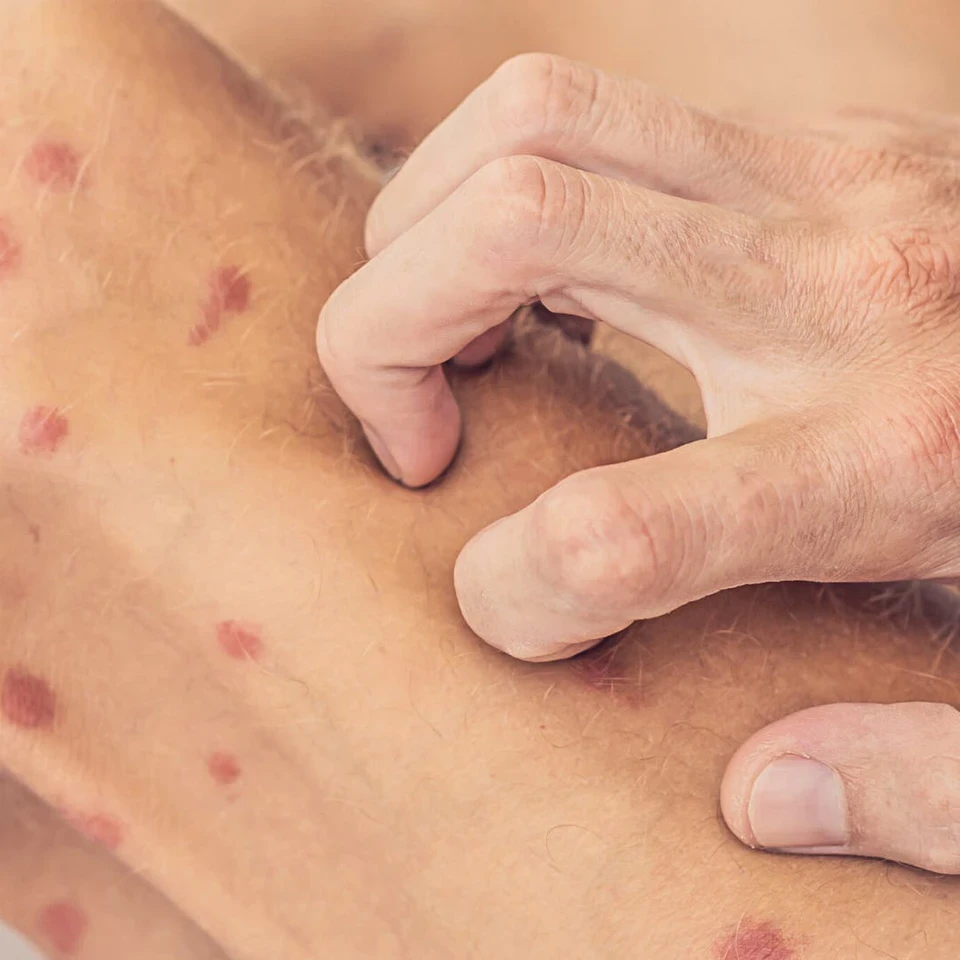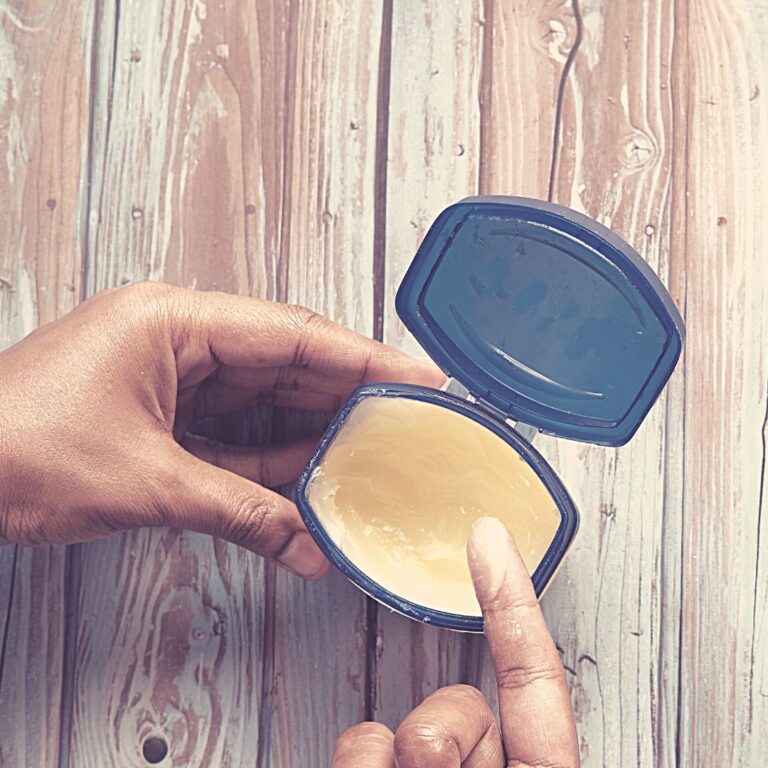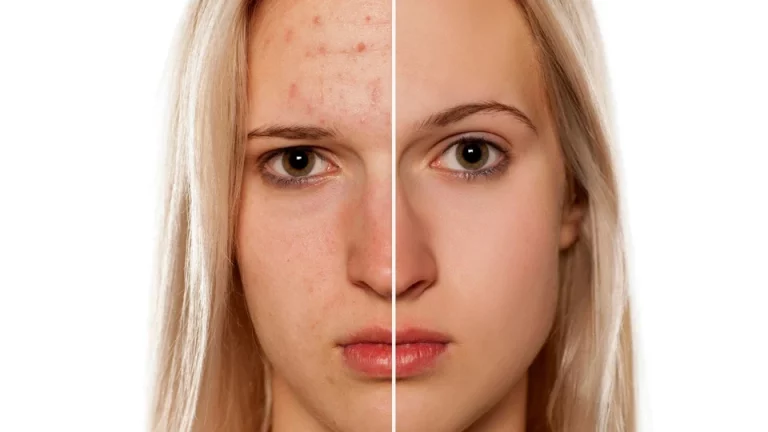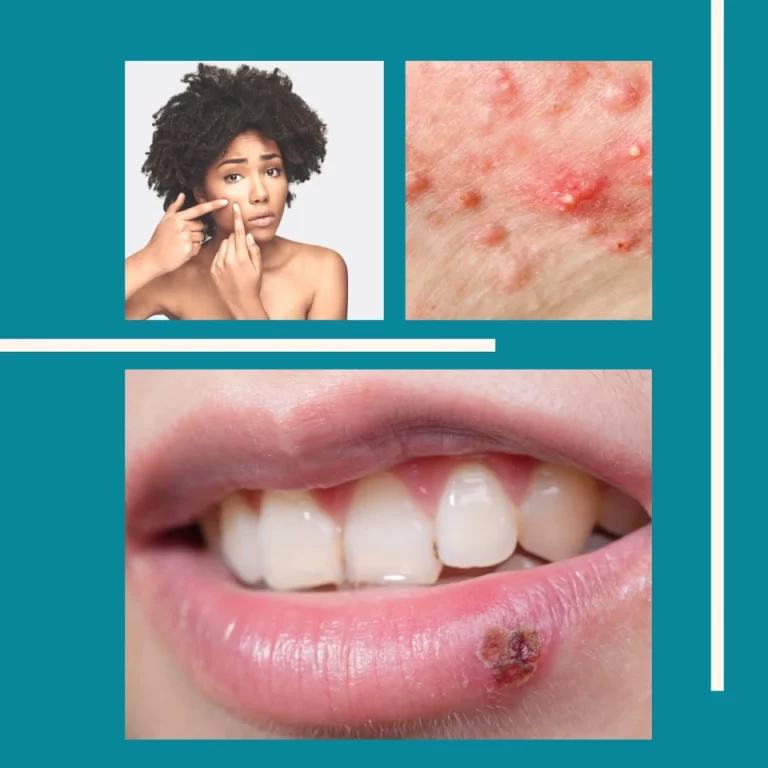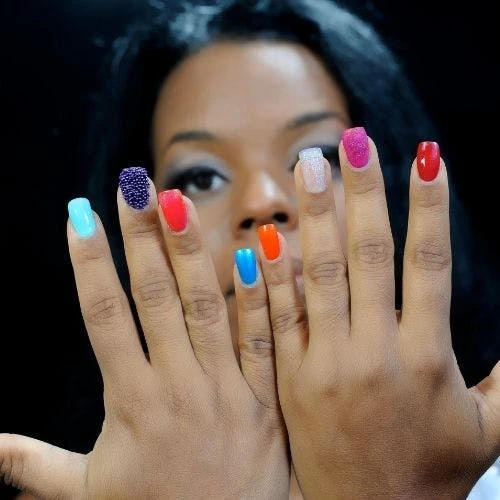Itchy Red Spots On Skin – 7 Causes You Need To Know About
So, your skin is itchy with bumps? Itchy red spots can happen on your skin for many reasons. When these bumps show up, they can cause unwanted stress or anxiety. Some types of itchy red bumps may resolve spontaneously, while others may require evaluation and management by a board-certified dermatologist. This article lists some of the most common conditions of itchy red bumps and key points to consider.
Urticaria (Hives)
What you may see: Hives are raised, red, itchy bumps that often arise in association with an allergic reaction to things like certain chemicals in food, medication, insect bites and sunlight. They can also be triggered by pressure on the skin, vibration, cold temperature, water or other causes. Urticaria is characterized as acute or chronic. Acute urticaria are hives that last less than six weeks and are most often associated with food allergies, medications, infection, insect bites or other disease. Chronic urticaria are hives that last longer than six weeks. The cause is often harder to determine. Thyroid disease, liver disease and cancer have been associated with hives and symptoms can affect the gastrointestinal tract, lung and muscles presenting as shortness of breath, muscle soreness, vomiting and diarrhea.
How to treat? Hives typically appear and resolve within a few hours and may never recur though it’s possible to have many flare-ups. If you experience hives daily or nearly every day for six weeks or more, this is chronic urticaria and getting relief often requires getting medical support. Seeking support from a board-certified dermatologist can help you determine whether you have hives or another condition and how best to manage it.
Keratosis Pilaris
What you may see: Keratosis pilaris (KP) is a common skin condition often mistaken for tiny pimples and thought to resemble goosebumps or “plucked chicken skin”. KP appears as tiny bumps commonly found on the upper arms, fronts of thighs, back, buttocks and children may have them on their cheeks. They feel rough to the touch and may appear reddish or brown depending on skin tone. They can become itchy and uncomfortable if the surrounding skin gets too dry or irritated.
How to treat? KP typically thought of as harmless, is often treated with moisturizer or exfoliating ingredients like urea and lactic acid to reduce the appearance of the bumps. KP has been associated with vitamin A deficiency and genetics predisposition.
Contact Dermatitis
What you may see: Hours to days after contact with something that irritates your skin or causes an allergic reaction, you can develop an itchy, red, bumpy, scaly rash. Contributing factors could include chemicals in personal care products, plants, and fabrics. Because so many everyday things can contribute to this condition, it can take some time and the expertise of a dermatologist to help sort out the causes.
How to treat? Relief requires avoidance of the cause, which means it could take time and/or the support of a board certified dermatologist who recommends treatment and who can help you:
- Find the root cause of the rash (note: this is not necessarily a quick fix)
- Tell you what to avoid
- Determine what, how and whether treatment is needed to clear the rash.
Molluscum Contagiosum (MC)
Related: Best Moisturizer After IPL Treatment
What you may see: Typically multiple little pink to flesh-colored bumps with a central white plug can be seen commonly on the extremities, torso and genitalia, although they can also occur on the eyelids. Often these bumps can be confused with pimples. Unlike pimples however, these bumps are caused by a virus and are highly contagious. This means that scratching, picking or rubbing the bumps can spread the virus to other parts of your skin and the germs on your hands and nails can infect the bumps with bacteria making them feel painful and/or contribute to developing a fever. It also requires that affected individuals do not share towels or personal items that touch affected areas. Of note, while this condition is commonly seen in children and referred to as “swimmer’s warts,” in adults MC is considered a sexually transmitted infection. If a person is immunocompromised for any reason, the virus may spread readily and can be difficult to control and treat. Moreover, if an individual develops recurrent MC infection, it might be a sign that they are immunodeficient.
How to treat? First and foremost, avoid picking, rubbing, or scratching the bumps. In many instances, the virus may clear on its own, the timing of which can be unpredictable depending on the health of an individual’s immune system. New bumps may continue to appear over several months, while other bumps disappear. It can take six to eighteen months for the skin to clear completely and can be facilitated with the support of a board-certified dermatologist.
Scabies
What you may see: Small red or pus-filled bumps on the palms, soles, wrists, around the belly button, and genitalia. Sometimes scabies can be widespread, especially in immunocompromised individuals, so the bumps may cover the majority of the body.
How to treat? Not only does the person diagnosed need treatment, but everyone who has had close contact with that person needs to be treated. Due to the contagious nature of this condition, seeking treatment from a board-certified dermatologist is necessary because the medicine needed to treat scabies is only available with a doctor’s prescription. Moreover, all the bedding, clothing and all items that have been in contact with infected individuals should be treated as well. Resources for treatment recommendations can be found at aad.org.
Folliculitis
What you may see: Tiny, itchy, occasionally painful bumps with or without white pus inside. These bumps typically form on skin that’s irritated by friction from being covered by clothing especially on the buttocks or thighs or as a result of a thin layer of skin growing over newly shaved or waxed skin trapping the underlying hair follicles.The friction and irritation by clothing or from picking can introduce bacteria, resulting in pustules that create a localized infection around the hair follicle.
How to treat? Typically these bumps will resolve within a few days as long as they remain clean and free from manipulation. If the bumps persist, are painful or appear infected, seeking medical advice from a board certified dermatologist is recommended.
Pre-cancerous lesions and cancer:
What you may see: Common things being common, most itchy red bumps are not going to be pre-cancerous or cancer. That being said, skin cancer is the most prevalent cancer in the United States and in countries around the world. There are more new cases of skin cancer diagnosed each year than all other cancers combined. In fact, one in five people in the US will be diagnosed with skin cancer during their lifetime, so it’s important to know what to look for. There are a variety of different cancer types that can present as red bumps on the skin including primary skin cancers including non melanoma skin cancer like basal cell carcinoma, squamous cell carcinoma and it’s precursor, actinic keratosis as well as variants of melanoma.Of note, metastases from systemic cancers like renal cell carcinoma, breast carcinoma and lung carcinoma can present on the skin as well
How to treat? If a bump appears and does not resolve quickly, enlarges or changes over time, or bleeds spontaneously, seek support from a board-certified dermatologist who can evaluate the bump for an accurate diagnosis.
We discuss products we think are useful to people. If you buy something through our links, we may earn a commission. Remember to check with your personal physician to see if a product recommended is right for you.


